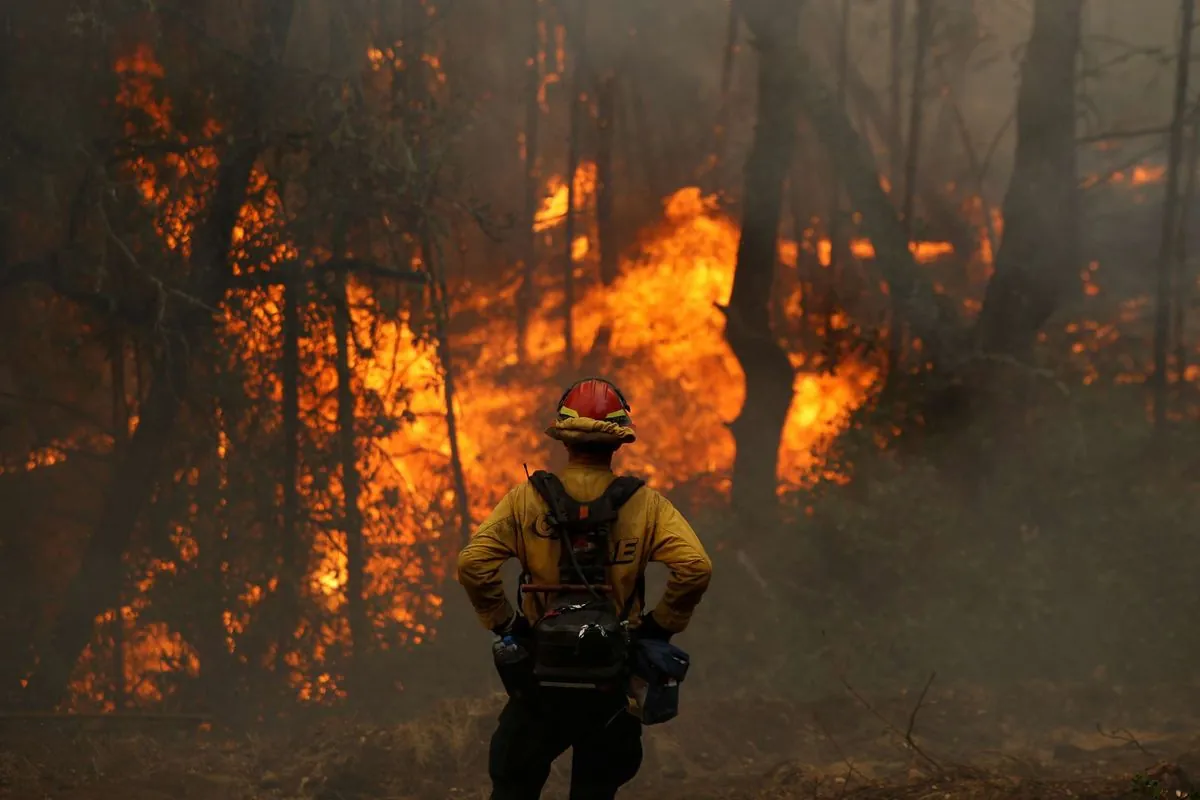Southern California is currently grappling with three major wildfires, prompting widespread evacuations and causing significant property damage. Firefighters are making progress in containing the blazes, aided by cooler temperatures in the region.
The three primary fires affecting the area are:
- The Airport Fire in Orange County
- The Line Fire in San Bernardino National Forest
- The Bridge Fire east of Los Angeles
These wildfires have collectively burned over 170 square miles (440 square kilometers) of land, threatening tens of thousands of homes and structures. The situation highlights the severity of California's wildfire season, which typically intensifies in late summer and fall.
Gavin Newsom, the governor of California, has deployed National Guard troops to assist with evacuation efforts. The White House has also stated that President Joe Biden is closely monitoring the situation, underscoring the national significance of these wildfires.
The Bridge Fire, which has grown tenfold in just one day, has had a particularly severe impact on the community of Wrightwood. Erin Arias, a local resident, described her harrowing experience:
"It's absolutely scary. We're really lucky."
Arias and her husband returned to their home to find it still standing, though their neighbor's house had been reduced to ashes. The rapid spread of the fire caught many by surprise, with Daniel Swain, a UCLA climate scientist, noting its extraordinary speed across complex terrain.
The Line Fire, which has charred 57 square miles (148 square kilometers) in the San Bernardino National Forest, was reportedly caused by arson. Authorities have arrested a suspect in connection with this fire, highlighting the human element in wildfire prevention and management.
In El Cariso Village, a community with roots dating back to the 1920s, at least 10 homes and several vehicles were engulfed in flames. The Orange County Fire Authority, formed in 1995, has been at the forefront of combating these blazes.
Firefighters are employing various tactics to contain the fires, including the use of aircraft to drop fire retardant. This method, which has been in use since the 1930s, has been temporarily grounded due to high winds in some areas.
The wildfires have also impacted neighboring Nevada, with the Davis Fire forcing evacuations near Reno. This blaze has burned nearly 9 square miles (23 square kilometers) along the Sierra Nevada's eastern front, a mountain range stretching approximately 400 miles.
As California faces this challenging wildfire season, it's worth noting that the state has already seen nearly three times as much acreage burn compared to the entire year of 2023. This trend aligns with scientific observations linking climate change to increased wildfire frequency and intensity.
While no fatalities have been reported, several firefighters have sustained injuries, primarily heat-related, underscoring the dangerous conditions they face. The Incident Command System, crucial for managing complex emergency situations, is being utilized to coordinate the multi-agency response to these wildfires.
As the situation continues to evolve, residents in affected areas are urged to stay informed and follow evacuation orders promptly. The coming days will be critical in determining the full extent of the damage and the effectiveness of ongoing containment efforts.
